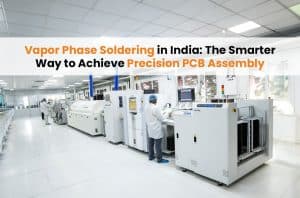With the continuous advances in electronics manufacturing, making the right choice of PCB assembly becomes huge for the product’s reliability, performance, and economic value. Two basic processes stand present in the market: Surface Mount Technology (offered by leading Surface Mount Technology services in India) and Through-Hole Technology. Both techniques have their own particular advantages, and they apply well to certain types of applications.
Understanding SMT and THT
Surface Mount Technology refers to placing electronic components onto the surface of printed circuit boards, commonly used in modern SMT assembly. Surface Mount Technology prefers high-density and dense designs and suits automated high-speed production lines.
In Through-Hole Technology, the component leads have to go into the PCB through holes already drilled for this purpose and are soldered from the opposite side. Although THT is not great on space-saving and is more mammoth in obviously soldering through-hole manner than SMT, it does provide more mechanical strength and is therefore best suited for products subjected to extreme mechanical stress or other kinds of adverse environment.
Key Considerations
1. Mechanical Reliability: Where severe vibration or mechanical stresses exist in the product, e.g., aerospace or industrial automation, THT may be more reliable on account of better solder joints.
2. Component Density and Miniaturization: SMT finds application in dense designs where board space is precious. Since it allows for component placement on both the top and bottom sides of the PCB, it stands for increased integration and fewer assemblies.
3. Volume and Cost of Production: Being an automated approach, an SMT procedure supports high-volume production leading to decreasing assembly costs and time. Entering into THT involves more manual effort and thus should cost more for large-scale production.
4. Testing and Prototyping: Some scenarios would require using THT during the prototyping stage, as manual assemblies and even reworks are more comfortable. They are also much easier to test and debug.
5. Thermal and Environmental Conditions: THT can offer a more reliable connection in the higher power or harsh environment application. However, this gap has decreased quite well with recent advances in SMT materials and techniques.
Making the Right Choice
SMT is the accepted practice for most of the newer electronic products, mainly when dealing with consumer and commercial products, as it is quite cheap and scalable. However, for mission-critical operations where the higher level of reliability is demanded, THTs are still needed.
For others, the good final answer should be a hybrid technology combining both SMT and THT, and thus getting the best of both worlds—leveraging the best of the miniaturization of SMT and power from THT where needed. It really needs to be tied to your product’s technical requirements, manufacturing size, and working environment.
Conclusion
At Roots EMS, our turnkey PCB assembly services in India is purpose-built to help you launch faster, scale smarter, and lead your market segment with confidence.Your choice between THT and SMT should be determined by your product’s technical specifications, longevity needs, and manufacturing volume. Many businesses today rely on trusted SMT assembly companies in India to streamline their production processes. With a capable EMS vendor on your side, you’re assured of selecting the best possible and most reliable assembly method in the first place.


